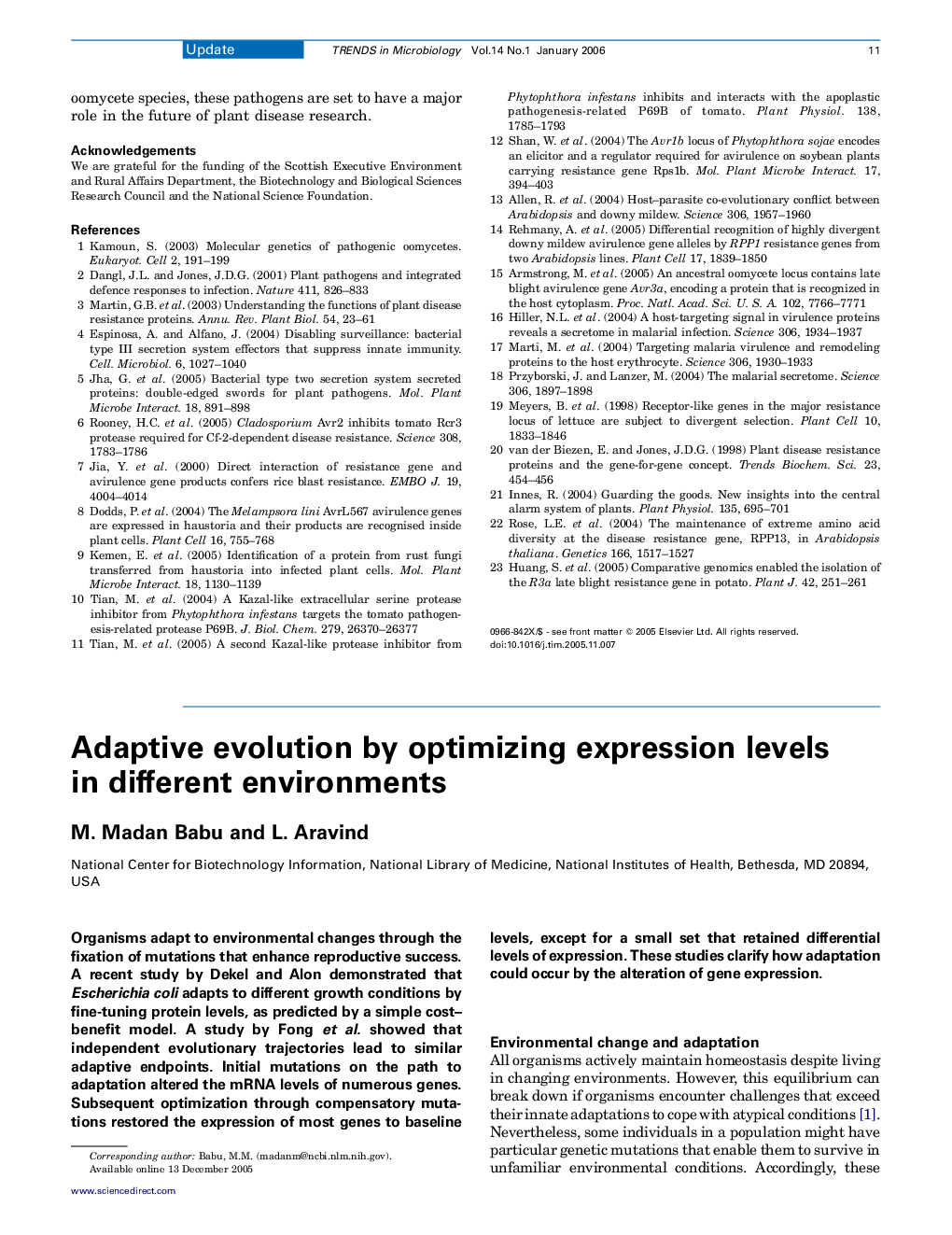| Article ID | Journal | Published Year | Pages | File Type |
|---|---|---|---|---|
| 3422762 | Trends in Microbiology | 2006 | 4 Pages |
Organisms adapt to environmental changes through the fixation of mutations that enhance reproductive success. A recent study by Dekel and Alon demonstrated that Escherichia coli adapts to different growth conditions by fine-tuning protein levels, as predicted by a simple cost–benefit model. A study by Fong et al. showed that independent evolutionary trajectories lead to similar adaptive endpoints. Initial mutations on the path to adaptation altered the mRNA levels of numerous genes. Subsequent optimization through compensatory mutations restored the expression of most genes to baseline levels, except for a small set that retained differential levels of expression. These studies clarify how adaptation could occur by the alteration of gene expression.
